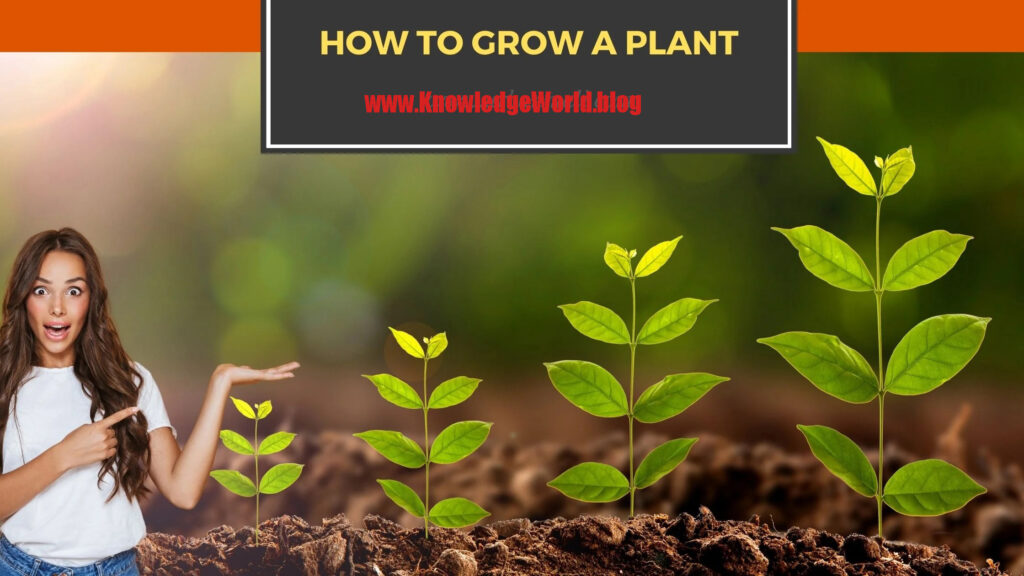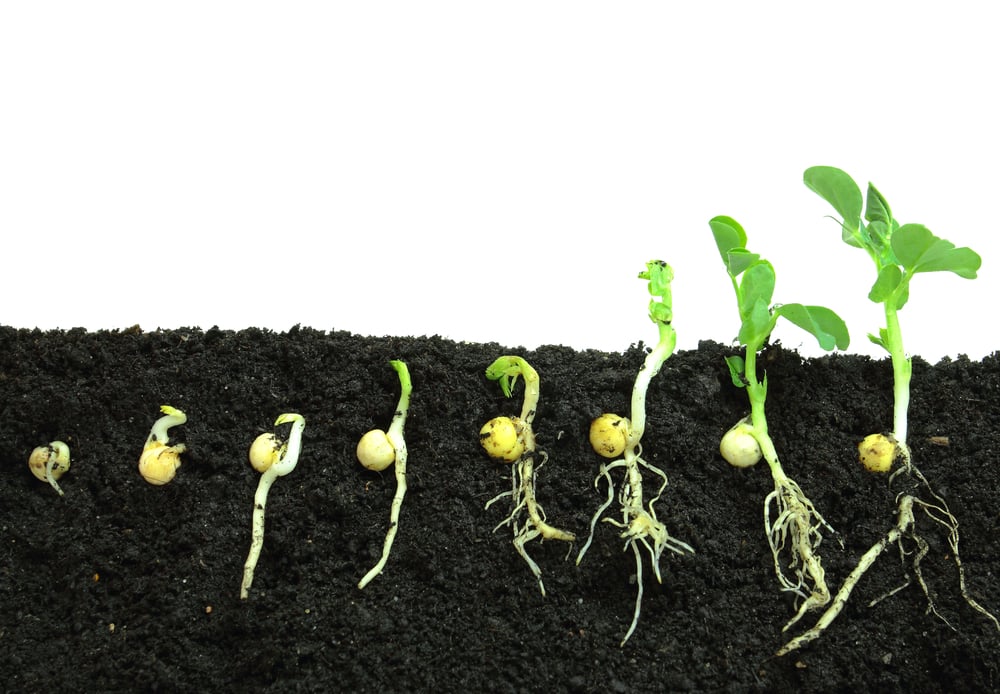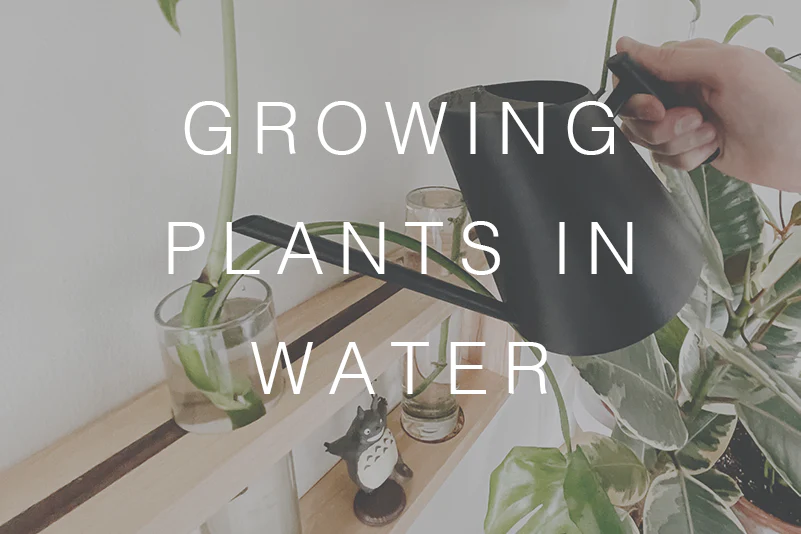Taking care of plants can be very rewarding, even if the plant is a fern and doesn’t produce fragrant flowers. This How to Grow Plant article will give you lots of tips on how to grow healthy plants.
…………………………………………………………………………………………………………………………………………………….
How to Grow Plant

How to Grow Plant, Mean Growing a plant can be a rewarding and enjoyable experience. Here are some general steps to help you get started:
- Choose the right plant: Select a plant that suits your environment and gardening experience. Some plants are easier to grow than others, so consider factors like sunlight, temperature, and water requirements.
- Provide proper sunlight: Most plants require sunlight to grow. Make sure your chosen plant gets the right amount of sunlight according to its specific needs. Some plants thrive in full sun, while others prefer partial or indirect light.
- Use quality soil: Good soil is essential for healthy plant growth. Use well-draining soil with proper nutrients for the type of plant you’re growing. You can also consider adding organic matter like compost to enrich the soil.
- Watering: Different plants have different water requirements. Overwatering or underwatering can harm your plant. Check the plant’s specific needs and water accordingly. Stick your finger into the soil; if it feels dry a couple of inches down, it’s time to water.
- Container or garden bed: Decide whether you want to grow your plant in a container (pot) or directly in the ground. Containers offer more control over the growing environment and are ideal for small spaces or when growing certain types of plants indoors.
- Fertilize: Some plants may benefit from occasional fertilization to provide essential nutrients. Use a balanced fertilizer or one specifically formulated for the type of plant you’re growing. Follow the instructions on the fertilizer packaging.
- Pruning: Trimming and pruning your plant can promote healthier growth and shape the plant’s appearance. Remove dead or damaged leaves and branches regularly.
- Pest control: Keep an eye out for pests and diseases. If you notice any issues, address them promptly using safe and appropriate pest control methods.
- Support (if needed): Some plants, like tomatoes or climbing plants, may require support to grow properly. Use stakes or trellises as needed.
- Patience and observation: Growing plants takes time and patience. Observe your plant regularly and make adjustments as needed based on its growth and health.
Remember, different plants have different care requirements, so it’s essential to research the specific needs of the plant you want to grow. Gardening can be a learning process, so don’t be discouraged by setbacks. With time and effort, you can successfully grow and nurture your plants. Happy gardening!
…………………………………………………………………………………………………………………………………………………….
How To Grow Plant Faster

How To Grow Plant Faster Mean, Growing plants faster requires providing them with optimal conditions and care. While you cannot drastically accelerate a plant’s growth beyond its natural pace, you can create an environment that encourages healthy growth. Here are some tips to help your plants grow faster:
- Choose fast-growing varieties: Some plant species naturally grow faster than others. When selecting plants for your garden, look for varieties known for their rapid growth rates.
- Optimal sunlight: Ensure that your plants receive the right amount of sunlight. Most plants require at least 6-8 hours of direct sunlight daily. If you’re growing plants indoors, use artificial grow lights to supplement natural light.
- Adequate water: Water your plants consistently and ensure they receive the right amount of water. Avoid overwatering or underwatering, as both can be detrimental to plant growth. The water needs of different plants may vary, so research the specific requirements of the plants you are growing.
- Quality soil: Use nutrient-rich and well-draining soil to promote faster growth. Consider adding compost or organic matter to improve soil fertility.
- Fertilize appropriately: Apply a balanced fertilizer or one formulated for the specific type of plant you are growing. Follow the recommended dosage and schedule to provide essential nutrients that may be lacking in the soil.
- Pruning and deadheading: Regularly remove dead leaves, flowers, and branches from your plants. Pruning stimulates new growth and redirects the plant’s energy to healthy areas.
- Mulching: Apply a layer of organic mulch around the base of your plants. Mulch helps retain moisture, regulate soil temperature, and suppress weed growth, all of which can contribute to faster and healthier growth.
- Adequate spacing: If planting multiple plants in a garden bed, ensure they have enough space to grow without competing for resources. Overcrowding can lead to stunted growth.
- Use plant supports: For plants that tend to grow tall or vine-like, use supports like stakes or trellises. This helps the plant grow upward without wasting energy on sprawling.
- Monitor for pests and diseases: Regularly inspect your plants for signs of pests or diseases. Swiftly address any issues you notice to prevent them from hindering the plant’s growth.
Remember, while these tips can promote faster growth, each plant has its own natural growth rate. Be patient and enjoy the process of nurturing your plants to maturity. Rushing the growth process too much can be counterproductive and lead to unhealthy plants.
…………………………………………………………………………………………………………………………………………………….
How To Grow Plant From Cutting

Growing plants from cuttings is a common and effective method of propagation. Here are the general steps to successfully grow a new plant from a cutting:
- Select the right cutting: Choose a healthy stem or leaf cutting from a mature and disease-free plant. The cutting should be several inches long and taken from a non-flowering part of the plant.
- Take the cutting: Use clean and sharp scissors or pruning shears to take the cutting. Make a clean cut just below a leaf node (the point where a leaf connects to the stem). Leaf nodes are crucial because they contain the cells responsible for root development.
- Remove lower leaves (for stem cuttings): If you’re propagating stem cuttings, remove the lower leaves, leaving a few leaves at the tip. This reduces water loss and redirects energy toward root development.
- Rooting hormone (optional): Some gardeners choose to dip the cut end of the cutting in a rooting hormone powder or gel. This may encourage faster root development, but it’s optional, and many plants can root without it.
- Planting the cutting: Prepare a container with well-draining potting soil. Insert the cut end of the cutting into the soil, making sure at least one leaf node is buried. Gently press the soil around the cutting to provide stability.
- Watering: Water the soil thoroughly after planting to ensure it is evenly moist. Avoid overwatering, as excessive moisture can lead to rot. A humidity dome or plastic bag can help maintain the moisture around the cutting.
- Provide the right environment: Place the container in a warm and well-lit area. Indirect light is generally best for cuttings. Avoid placing them in direct sunlight, as it may stress the cutting.
- Patience: Root development can take several weeks, depending on the plant species. Be patient and avoid disturbing the cutting during this time.
- Transplanting: Once the cutting has developed a sufficient root system and new growth is evident, you can transplant it into a larger pot or directly into the garden, if applicable.
- Continue care: Treat the new plant as you would any established plant of the same species, providing the appropriate amount of water, sunlight, and nutrients.
It’s essential to remember that not all plants can be propagated from cuttings, and some may be more challenging than others. Additionally, each plant species may have slightly different requirements for successful rooting. Some common plants that can be propagated from cuttings include pothos, spider plants, mint, basil, and many others. Be sure to research the specific requirements of the plant you’re propagating to ensure the best chances of success. Happy propagating!
……………………………………………………………………………………………………………………………………
How To Grow Plant From Seed

Growing a plant from seed can be a rewarding experience. Here are the general steps to help you grow a plant from seed successfully:
- Choose the right seeds: Select seeds of the plant you want to grow. Consider factors such as climate, growing season, and available space to ensure the chosen plant is suitable for your environment.
- Gather supplies: You’ll need a few basic gardening supplies, including seed trays or pots, potting soil, a watering can, labels, and a suitable location for the seeds to grow.
- Prepare the soil: Use a high-quality seed starting mix or potting soil. Fill the seed trays or pots with the soil, leaving some space at the top for watering.
- Plant the seeds: Follow the instructions on the seed packet for planting depth and spacing. Generally, the rule of thumb is to plant the seeds at a depth of about twice their diameter. After planting, gently water the soil.
- Provide the right environment: Place the seed trays or pots in a warm and well-lit area. Most seeds require consistent warmth to germinate, so consider using a seed starting heat mat if necessary. Ensure the seeds receive sufficient sunlight or use grow lights to provide artificial light if growing indoors.
- Water appropriately: Keep the soil consistently moist but not waterlogged. Water from the bottom of the trays if possible to prevent disturbing the seeds and young seedlings.
- Monitor and wait for germination: Germination times vary depending on the plant species. Be patient and keep a close eye on the seed trays for signs of germination, such as tiny sprouts breaking through the soil.
- Thin out seedlings: If multiple seeds germinate in the same container, you may need to thin them out to allow each seedling enough space to grow. Choose the healthiest-looking seedling and carefully remove the others.
- Transplant seedlings: Once the seedlings have grown a few sets of leaves and are strong enough to handle, transplant them into larger pots or directly into the garden if the weather is suitable. Be gentle when handling the young plants to avoid damaging the delicate roots.
- Continue care: Water, fertilize, and provide appropriate sunlight as the plants grow. Regularly inspect for pests and diseases, and address any issues promptly.
Remember that not all seeds have the same germination requirements, so it’s crucial to research the specific needs of the plant you’re growing. Each plant may have different optimal planting depths, light conditions, and watering requirements. As you gain experience, you’ll become more proficient at growing different types of plants from seeds. Happy gardening!
……………………………………………………………………………………………………………………………………
How To Grow Plant Clippings

Growing plants from clippings, also known as propagating, is an excellent way to produce new plants from existing ones. The process can vary depending on the type of plant you’re propagating, but here are some general steps to help you get started:
- Select healthy clippings: Choose a healthy stem or leaf cutting from a mature and disease-free plant. The cutting should be several inches long and taken from a non-flowering, healthy part of the plant.
- Take the cutting: Use clean and sharp scissors or pruning shears to take the cutting. Make a clean cut just below a leaf node (the point where a leaf connects to the stem). Leaf nodes are crucial because they contain the cells responsible for root development.
- Remove lower leaves (for stem cuttings): If you’re propagating stem cuttings, remove the lower leaves, leaving a few leaves at the tip. This reduces water loss and redirects energy toward root development.
- Rooting hormone (optional): Some gardeners choose to dip the cut end of the clipping in a rooting hormone powder or gel. This may encourage faster root development, but it’s optional, and many plants can root without it.
- Planting: Prepare a container with well-draining potting soil. Insert the cut end of the clipping into the soil, making sure at least one leaf node is buried. Gently press the soil around the cutting to provide stability.
- Watering: Water the soil thoroughly after planting to ensure it is evenly moist. Avoid overwatering, as excessive moisture can lead to rot. A humidity dome or plastic bag can help maintain the moisture around the cutting.
- Provide the right environment: Place the container in a warm and well-lit area, but avoid direct sunlight for the first few days, as it may stress the cutting. A bright location with indirect light is generally best.
- Patience: Root development can take several weeks, depending on the plant species. Be patient and avoid disturbing the cutting during this time.
- Transplanting: Once the cutting has developed a sufficient root system, and new growth is evident, you can transplant it into a larger pot or directly into the garden, if applicable.
- Continue care: Treat the new plant as you would any established plant of the same species, providing the appropriate amount of water, sunlight, and nutrients.
It’s essential to remember that not all plants can be propagated from cuttings, and some may be more challenging than others. Some common plants that can be propagated from cuttings include pothos, spider plants, mint, basil, and many others. Be sure to research the specific requirements of the plant you’re propagating to ensure the best chances of success. Happy propagating!
……………………………………………………………………………………………………………………………………
How To Grow Plant In Water

Growing plants in water is a popular method of propagation known as water propagation. Many plants can be grown successfully in water, and it’s a great way to propagate cuttings and create new plants. Here’s how you can grow a plant in water:
- Select a healthy cutting: Choose a healthy stem or leaf cutting from a mature plant. The cutting should be several inches long and taken from a non-flowering, disease-free part of the plant.
- Remove lower leaves (for stem cuttings): If you’re using a stem cutting, remove the lower leaves, leaving a few leaves at the tip. This reduces water loss and prevents submerged leaves from decaying in the water.
- Place the cutting in water: Place the cutting in a container of water, making sure that at least one leaf node is submerged. The leaf node is where the roots will develop. You can use a clear glass or jar so that you can easily monitor root growth.
- Change the water regularly: Stagnant water can lead to the growth of harmful bacteria. Change the water every few days or when it appears cloudy. When changing the water, gently rinse the cutting to remove any debris.
- Provide indirect light: Place the container in a location with bright, indirect light. Avoid direct sunlight, as it can heat up the water and potentially harm the cutting.
- Be patient: Root development can take several weeks, depending on the plant species. Be patient and wait for roots to form before transplanting the cutting into soil.
- Transplanting (optional): Once the roots have grown to a few inches long, you can transplant the cutting into soil. Carefully remove the cutting from the water and plant it in a pot with well-draining soil. Water the soil after planting and continue to care for the plant as usual.
Not all plants will root successfully in water, but many common houseplants and herbs can be propagated using this method. Some examples of plants that can be propagated in water include pothos, philodendron, mint, basil, and many others.
Remember that water-grown plants may have weaker root systems compared to those grown in soil, so handle them with care when transplanting. Additionally, some plants may thrive in water indefinitely, while others may need to be transitioned to soil once they have developed strong roots.
Related Articles-
Top 10 Best Hosting Services 2023
How To Take Milky Way Photos | Complete Guide 2023
What Is Extended Reality (XR) ? Everything You Need To Know 2023…
What Is The Law Of Attraction ? How To Use It 2023…
How To Get Your Brain To Focus And Concentration 10 Ways 2023
Ceylebrity News And Blog- WWW.CEYLEBRITYNEWS.COM
Visit Our Online Shopping Website- WWW.CEYLEBRITY.COM
Ceylebrity Sinhala News And Articles- WWW.CEYLEBRITYNEWS.L
Share.......





2 thoughts on “How To Grow Plant Faster, Cutting, From Seed, Clippings, In Water”